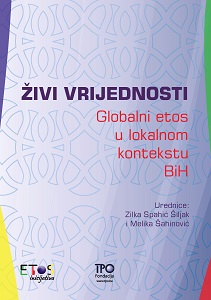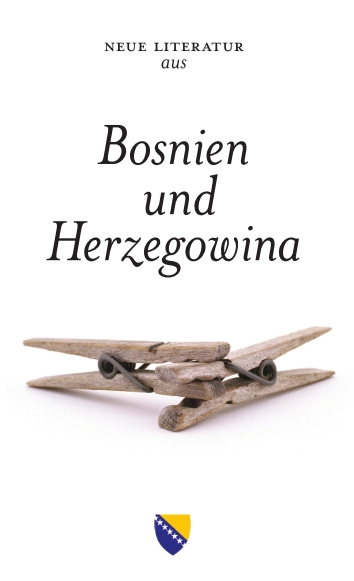
Hadžem Hajdarević
Poems by Hadžem Hajdarević: -Dichters Winter; -Neum; -Ich baue ein Haus; -Afrikanische Tiger.
More...We kindly inform you that, as long as the subject affiliation of our 300.000+ articles is in progress, you might get unsufficient or no results on your third level or second level search. In this case, please broaden your search criteria.

Poems by Hadžem Hajdarević: -Dichters Winter; -Neum; -Ich baue ein Haus; -Afrikanische Tiger.
More...

Poems by Radomir D. Mitrić: -Bosnische Notturno; -Abend unruhig und mild; -Zurückweichen; -Tod eines Seehundes.
More...





Poems by Stevan Tontić: -Das glück der Taubstummen; -Metaphysik des Barbarentums; -Ich sah das Neugeborene; -In der unsterblichen Ulme.
More...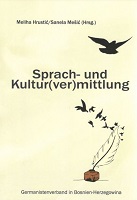
When Darko Cvijetić writes about skyscrapers in Prijedor in his novel Schindler's Lift, he doesn't think of the building as the epitome of human living. Nor is his literary impetus directed towards the events associated with this building. Basically, he is also not interested in the history of this city. He explicitly stands up for people, legitimizing his literary position through deep compassion for every victim of those skyscrapers of this city. The red and blue skyscraper are two of the tallest buildings in Prijedor. In 1975 the first tenants moved into the building. To this time all people still lived together and in peace. All those people celebrated and mourned together, as it was expected from a socialistic country, or from a multicultural Bosnia and Herzegovina. This multicultural country came into the focus of public attention some 15 years later, the difficult war years followed and the immediate post-war period. There is no narrative or narrator capable of understanding the horror of that war. No narrative could compare with the victims of the war. The literary intention of Darko Cvijetić was to prove this point.
More...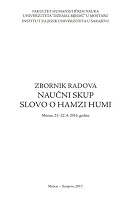
The paper tends to analyze the figure of contrast in selected Hamza Humo’s poems, with the purpose to show in which way has the figure of contrast, at all text levels, affected the position of Humo’s lyric subject and his specific experience of life. Contrast or antithesis is one of the most used figures in poetry. In Humo’s poems the function of contrast is related to the poetics of expressionism.
More...
On selected examples of Humo’s verses, in this paper we analyze the ambiguous syntactic structures, that is the presence of syntactic homonymy, ie. syntactic ambiguity in the corpus of poetic discourse. The aim is to find and categorize each sources of syntactic ambiguity, and in the particular case, to Investigating the level of desirability of syntactic homonymy in poetic discourse.
More...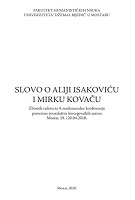
The text briefly talks about the ballad Hasanaginica, furthermore about the play Hasnaginica by Alija Isaković, and finally, and with more details, about its performance in Paris. In the Atelier Theater in the Serbo-Croatian (BCHS) language which operated at the University of Paris IV-Sorbonne we set up Isaković’s Hasanaginica in 1999. Isaković’s drama had its premiere under the translated title La femme de l’aga Hasan on the April 14 at 19:30. Nex day it was stayed in the magnificent building of the Grand Palea, in front of a large audience, of different profiles and languages. The text that follows is a brief account of this show.
More...
From the ancient times to the present, irony – as a complex literary structure – evades strict definingdue to its ambivalence. Detecting its forms in literary text is a complex task that requires a two-way engagement, i. e. it is created by the dual relationship between an author and a reader of a text. Alija Isaković is one of the authors in whose prose works the ironic discourse is present in various forms. The paper discusses to what extent ironic discourse contributes to the formation of structure and meaning of a text, as well aswhat its modificationsare in Isaković’s narrative process.irony; discourse; Alija Isaković; narrative text;
More...
The paper analyzes selected short stories by Alija Isaković taking into account the ways of shaping space in narrative discourse. Isaković is known as an author whose poetics is modernistic, his narration, narrators and focalizers, as well as chronotopes are unfamiliarized. In terms of themes and motifs the focus of his narratives are characters belonging to the world of alienation and absurdity. Because of that, the spaces in which the plot takes place are much more symbolic spaces of anxiety rather than mimetic spaces known from the real world. Following this assumption, we will search for the role that space has and its textual shaping in the overall meaning of the narratives.
More...
The paper explores Bakhtin’s concept of polyphony in Alija Isakovic’s novel Pobuna materije/The Rebellion of Matter. In literary theory, polyphony as a feature of a polyphonic novel implies the simultaneity of equal speeches of characters that are not overridden by the author’s consciousness/voice. Speaking of Dostoyevsky as the creator of the polyphonic novel, Bakhtin recognizes the basic principle of composition in his novels in “the fusion of the most diverse and incompatible materials - with a multitude of consciousness centers unattached to one ideological common denominator.” In this context, one can also read Isakovic’s novel The Rebellion of Matter, which, according to Enver Kazaz, “is organized on the principle of a dramatic polylogue, in which three narrative-drama flows occur.”
More...
Svaki govor o ličnosti i djelu Alije Isakovića, u ovakvim ograničenim prilikama kao što su manifestacije ili godišnjice, nužno mora biti manjkav i reduciran na nekoliko suvislih rečenica koje redovno znače, zapravo, samo ličnu impresiju i subjektivni stav o ovom samozatajnom i hrabrom intelektualnom vizionaru, koji je išao uvijek korak ispred drugih. Bez obzira na takav rizik uprošćavanja i pojednostavljenje, osjećam potrebu reći nekoliko svojih sudova o Aliji Isakoviću, ako ništa, radi mirisa sjećanja na ovog tihog i zavjerenički angažiranog intelektualca.
More...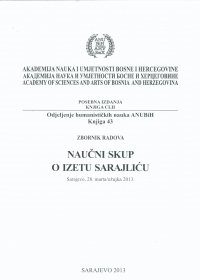
Razmišljajući o tome da li bih imala nešto originalno reći o poeziji Izeta Sarajlića, ili joj bar pristupiti na neki novi način, i čitajući ono što je o njoj već napisano, našla sam da je i Radovan Vučković još davne 1981. godine započeo svoje razmišljanje konstatacijom kako je o njoj teško pisati: “Kao mladim ljudima, ona nam se uvukla u pamćenje i primali smo je sa simpatijama, bez razmišljanja, kao što se upija blagi zvuk koji nas nežno miluje i prenosi u sentimentalne iluzije ili opominje na nedavne ljudske katastrofe” (Vučković: 1998, 407)1 . Pitanje kako pisati o Sarajlićevoj poeziji nije retoričke prirode.
More...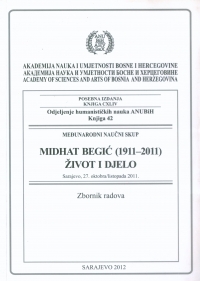
Na koji način ima smisla danas, u našim radikalno promijenjenim političkim i porazno degradiranim kulturnim prilikama misliti o Midhatu Begiću, o njegovu značenju i o njegovoj književnoj i intelektualnoj ostavštini, a da to ne bude tek ritualno prisjećanje i sentimentalno odavanje počasti? Drugim riječima - što je ono po čemu je Midhat Begić živ danas?
More...